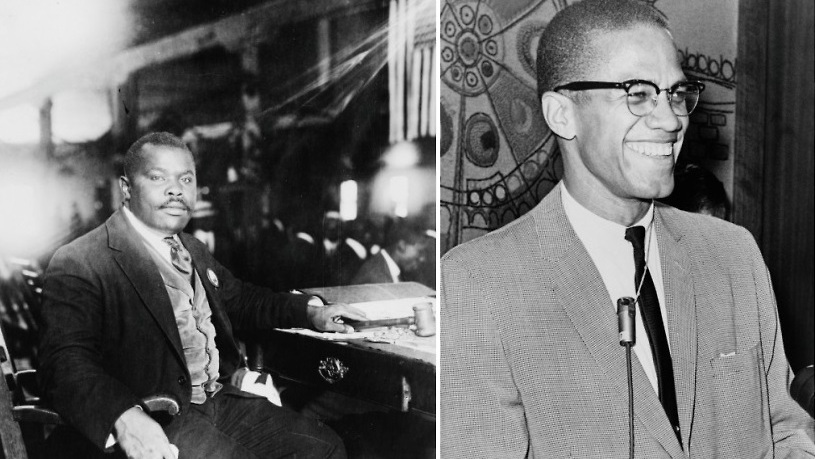(ThyBlackMan.com) It is formally testified by the experts. The soils, sea, rivers, fishes, animals, human beings in Martinique and Guadeloupe are massively contaminated with a specifically dangerous pesticide, the chlordecone. The Kannari report declared in 2015 that “90% of the martinicans have chlordecone in their blood”. According to a 2009 report produced by the Parliament office for scientific choice evaluations, 6,000 tons of chlordecone were dumped in these places from 1973 to 1993. The report explained that “the effects of 6,6 pounds of chlordecone spread per hectare disappear from the soil only after 7 centuries”. As the molecule is absolutely not biodegradable, the damage indeed shall last 700 years.
The chlordecone was widespread in the banana plantings by the farmers to eliminate an insect, the black charason of banana, the bananas enemy. The banana is the most planted fruit on these islands, the second fruit most consumed in France. It’s the greatest business in french Caribbean economy. First, in 1964 in Cameroon (Africa), the chlordecone was exploited efficiently, introduced in 1972 in Martinique/Guadeloupe by their agriculture ministry. In  1975 in Virginia state (Usa), the chlordecone called “kepone” contaminated half of the employees staff in the Hopewell factory. A river nearby the factory also got infected. The factory has been closed.
1975 in Virginia state (Usa), the chlordecone called “kepone” contaminated half of the employees staff in the Hopewell factory. A river nearby the factory also got infected. The factory has been closed.
The Us government banned the chlordecone in 1976. By 1977 and 1980, 2 french experts, Snegaroff and Kermarrec published a report concerning the chlordecone risks. The World Health Organization classified the chlordecone in the highly carcinogenic products in 1979. But, in 1981 a martinican farmer bought the patent to produce it in Martinique and sold it as “curlone”. In 1990, the government banned its use in France but the banana lobby complained and could obtain from the authorities 3 years more for sale. Since 1993, during six years, there was a total silence about the dangers of chlordecone. In 1999, the water services in Martinique discovered in the water sources for human use some chlordecone, a rate of 10 micrograms per liter, 100 times higher than the normal rate tolerated for the pesticide residues. The same situation was observed in Guadeloupe.
It rose a scandal in 2002 when in Dunkerque, a police control captured one ton and half of sweet potatoes contaminated came from Martinique. Specialists, farmers, engineers, health services started investigating systematically on the chlrodecone molecule presence and noticed that chlordecone was everywhere on these 2 islands, Martinique and Guadeloupe. The molecule has infected all the food distribution chain. Remy Borgia is a guadeloupean fisher, registered at the small Banana harbour. He said “ Here we are all chlordeconed, we eat what we fish”. Many associations stood up to protest. In 2006, 5 lawyers, Jean-Claude Durimel, Roland Ezlin, Sarah Aristide, Tania Bangou, lead by Harri Duhamel have faced many obstacles to file lawsuits against the government in Pointe-à-Pitre Court to establish the responsibilities of this disaster.
By 2007, Raphael Confiant, a famous martinican writer published with a martinican lawyer Louis Boutrin Chronicle of a poisoning proclaimed: The Chlordecone scandal in French Caribbean islands 1972-2002, a book which became in Martinique the best of best-sellers relating the scandal which had the public opinion furious following with interest the case. Anne Bamberge, judge at the first instance court of Paris demanded a report on the chlordecone toxicity to the experts. The toxicologist Jean-François Narbonne and the epidemiologist Luc Multigner within the National Agency of Food Security produced a report. They claimed the “ all the scientist datas available internationally between 1981 and 1993 including those described before 1981 could clearly inform with precision, the metabolism, the semi-life, the toxicogenic of the chlordecone”.
Otherwise, who can honestly defend that the authorities who allowed the chlordecone business during 21 years were not informed about all the dangers of this pesticide? In January 2018, 4 parliament members challenged the government to solve the problem. A parliament investigation launched by the deputy Philippe Edmond-Mariette is planning to mobilize in 2018 the parliament members for a debate. The court in Paris gives favourable news concerning the procedure engaged by the 5 lawyers against the 1990/1993 agriculture minister.
The chlordecone generates 70% more risks of prostat cancer, affects the liver, children capacity of learning, trouble of vision, headaches. Doctor Pascal Blanchais of the Pointe-à-Pitre hospital declared in a tv report “ It is a cancer which is 2 times more frequent in the carribean than other regions of France, people die 2 times more from it than other cancers, it is the most remarkable to all families because each family has a member ( male) who has already been affected and it represents annually in Guadeloupe 500 new cases, 500 new cases in Martinique, the half part of the new cancers, all gender considered”.
Source: http://www.publicsenat.fr/emission/chlordecone-les-antilles-empoisonnees-8893 & https://reporterre.net/Chlordecone-aux-Antilles-le
Staff Writer; Abu-Jahlil Astrid Chacha
One may also connect with this brother on Facebook; Segla A.
















Leave a Reply